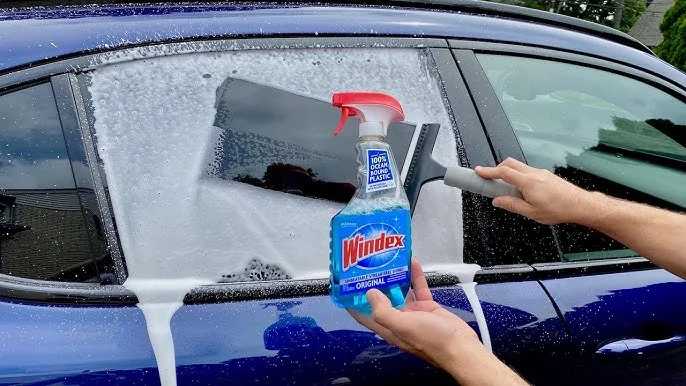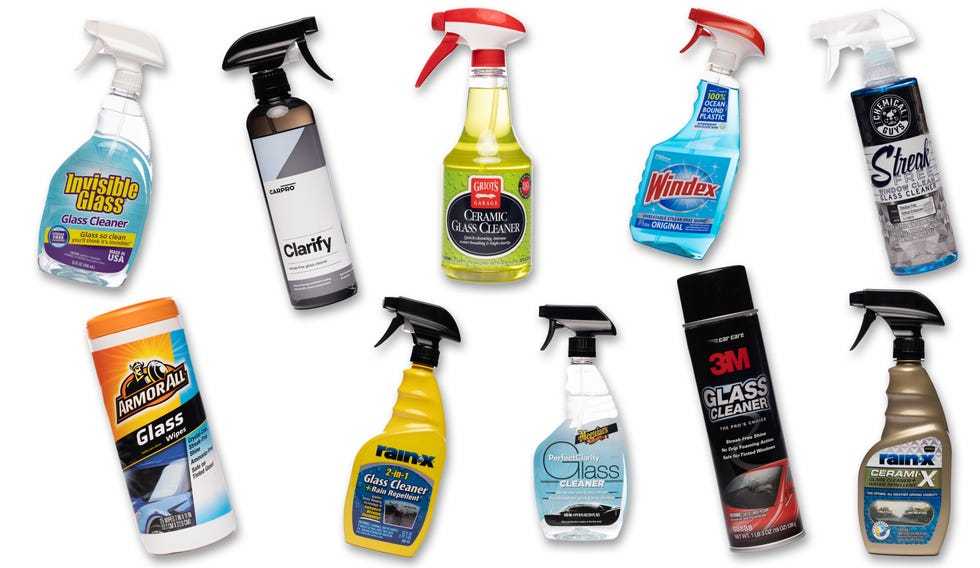If you’re unsure whether your windshield is laminated, a quick way to tell is by performing a simple test: try to peel off a small part of the glass or check for a plastic layer between two glass sheets, which is characteristic of laminated windshields. Laminated windshields are designed to hold together upon impact, making them safer, and distinguishing them can save you time during repairs or replacements. To find out definitively, look for a visible plastic layer or conduct a light test to see if the glass is thickened or has a plastic film embedded. Knowing your windshield type ensures you understand its safety features and maintenance needs, helping you make informed decisions about repairs or replacements.
The easiest way to identify if your windshield is laminated is by examining the glass closely or performing a simple test. Laminated windshields are made with a plastic layer that holds the glass together if shattered, unlike tempered glass used in side and rear windows. Recognizing this feature can help you determine the appropriate safety measures and care needed for your vehicle. When in doubt, consulting a professional is always the safest bet to confirm the windshield type and ensure your vehicle’s safety features are effective.
How to Know If My Windshield Is Laminated
Understanding whether your windshield is laminated is important for safety, repairs, and insurance claims. Laminated windshields are common in modern vehicles and have specific features that set them apart from other types. This guide will help you identify if your windshield is laminated by exploring its characteristics, visual clues, and testing methods.
What Is a Laminated Windshield?
A laminated windshield is made of two layers of glass with a plastic layer in between. This plastic layer, usually polyvinyl butyral (PVB), holds the glass together if it breaks. It also provides better protection against injuries and prevents dangerous shards from flying into the vehicle.
Why Is Laminated Glass Used in Windshields?
Laminated glass offers multiple benefits. It enhances safety by preventing shattered glass from dispersing inside the car. It also reduces ultraviolet radiation and offers better resistance to impacts like rocks or debris hitting the glass. Many regions require laminated windshields as part of vehicle safety standards.
Visual Clues That Indicate Your Windshield Is Laminated
Recognizing visual signs is the simplest way to determine if your windshield is laminated. Here are some common clues to look out for:
1. The Thin Dark Line Along the Edges
Most laminated windshields show a faint, dark line around the perimeter. This is where the two glass layers are sealed together. It may be more visible in certain lighting conditions or if you look carefully at the edges.
2. The Noticeable “View Through” Test
Laminated windshields tend to have a slight distortion or a minor tint. When you look through the glass, objects may appear slightly warped or blurry compared to regular glass. This is due to the plastic layer inside.
3. The “Sunlight Reflection” Method
Under direct sunlight, laminated windshields often reflect light differently. You might notice a subtle sheen or a faint rainbow or film effect on the glass surface. This occurs because of the plastic layer’s optical properties.
How To Test if Your Windshield Is Laminated
There are simple tests you can perform to confirm if your windshield is laminated. These are quick methods you can do at home or on the road.
1. The Plastic Bag Test
Place a plastic bag or thin piece of plastic directly against the windshield. If it sticks tightly or if you observe a slight film between the plastic and the glass, chances are the windshield is laminated. This is because the plastic layer in laminated glass interacts with the outer surface.
2. The Light Test
Hold a flashlight or bright laser pointer against the glass in a dark room or when the car is shaded. If the light diffuses or creates a cloudy appearance through the glass, this suggests the presence of the plastic layer, indicating laminated glass.
3. The Crack or Break Test (With Caution)
If you accidentally crack your windshield, laminated glass tends to hold the shards together more than tempered glass. When impacted, laminated windshields often crack but do not shatter into tiny pieces. Instead, they develop spider web-like cracks, which is a good indicator.
Physical and Technical Factors That Help Identify Laminated Windshields
Apart from visual clues and simple tests, other factors can confirm if your windshield is laminated.
1. Inspection of the Manufacturer’s Label
Look for a label or stamp usually visible in the corner of the windshield. Laminated windshields often have markings indicating “LAMINATED” or similar wording, along with the manufacturer’s name and safety standards.
2. Use of a Refractive Index Meter
Professionals can use specialized tools like a refractive index meter to determine the glass type. Laminated glass has a different refractive index compared to tempered or other glass types.
3. Consulting Your Vehicle’s Manufacturer or Service Records
Your vehicle’s manual or service records may specify the type of windshield installed. This information can instantly confirm if the glass is laminated.
Additional Information on Laminated Windshields
Understanding the construction of laminated glass can further help in identification. The plastic layer inside is usually about 0.76 millimeters thick, contributing to the durability and safety features. This layer also helps block most UV rays, protecting your interior.
Differences Between Laminated and Tempered Windshields
Knowing how laminated glass compares to tempered glass helps in identification. Tempered glass is designed to shatter into small, blunt pieces and is used in side and rear windows. It does not have the plastic interlayer, which makes laminated glass stronger and more impact-resistant.
Comparison Table: Laminated vs. Tempered Glass
| Feature | Laminated Windshield | Tempered Side and Rear Windows |
|---|---|---|
| Construction | Two glass layers with plastic layer in between | Single glass heated and cooled to increase strength |
| Shatter Pattern | Cracks but sticks together, forming spider web patterns | Breaks into small, blunt pieces |
| Impact Resistance | High; absorbs impacts and holds shards | Moderate; designed to shatter upon impact |
| Visibility | Can be slightly tinted or warped | Clear, with minimal distortions |
Maintaining and Replacing Laminated Windshields
Proper care extends the life of laminated windshields. Regular cleaning with appropriate products prevents damage. When replacements are needed, ensure the new glass is laminated to meet safety standards.
Signs You Need To Replace Your Windshield
– Large cracks or chips that impair visibility
– Multiple small cracks forming a web pattern
– Damage in the driver’s line of sight that cannot be repaired
Choosing the Right Replacement
Always opt for OEM (Original Equipment Manufacturer) laminated windshields. They meet safety and quality standards and ensure your vehicle remains safe and compliant with regulations.
Summing It Up
Identifying if your windshield is laminated involves observing visual clues, performing simple tests, and consulting records or professionals. Recognizing laminated glass helps you understand your vehicle’s safety features better and ensures proper maintenance and repairs.
By paying close attention to the edges, impact responses, and using the described tests, you can confidently determine whether your windshield is laminated. Remember, laminated glass plays a crucial role in your safety and vehicle protection, making it essential to identify it correctly.
How to tell if your car has laminated glass!
Frequently Asked Questions
What physical characteristics differentiate laminated windshields from other glass types?
Laminated windshields typically have a smooth, uniform appearance with a slight thickness compared to standard glass. When you tap on them gently, they produce a duller sound, and the glass feels heavier. They also tend to remain intact after minor impacts, unlike non-laminated glass that shatters into sharp pieces.
How can I perform a simple test to identify a laminated windshield at home?
You can conduct a light penetration test by holding a small flashlight or cellphone flashlight against the glass in a dark room. If the light passes through without obstruction or glare, it might not be laminated. Conversely, if the light diffuses or you see a distinct layer or film, the windshield is likely laminated.
Are there visual signs or markings that indicate my windshield is laminated?
Many laminated windshields have small printed labels or decals embedded on the corners or edges, indicating they meet safety standards. Additionally, the presence of a dark inner layer or a slight tint between the glass layers can be signs of lamination. Inspect the edges carefully for any visible layers or films.
Is there a difference in how laminated glass reacts during a breakage compared to other types?
Yes. When impacted, laminated windshields tend to crack but stay largely intact because the plastic layer holds the glass fragments together. Non-laminated glass shatters into sharp, loose pieces almost immediately. If your windshield cracks but the glass remains mostly in one piece, it is probably laminated.
Can professional inspection confirm whether my windshield is laminated?
Absolutely. A trained technician can examine your windshield for specific markings, layers, and structural features, providing definitive confirmation. They may also use specialized tools or tests to verify the lamination status quickly and accurately.
Final Thoughts
To know if my windshield is laminated, examine it carefully. Laminated windshields typically have a plastic layer sandwiched between two glass layers, making them more resistant to shattering. Check for a visible line or slight discoloration around the edges of the glass. You can also perform a simple test by tapping lightly—laminated glass produces a duller sound compared to tempered glass. Recognizing the differences helps you identify if your windshield is laminated quickly and accurately.



